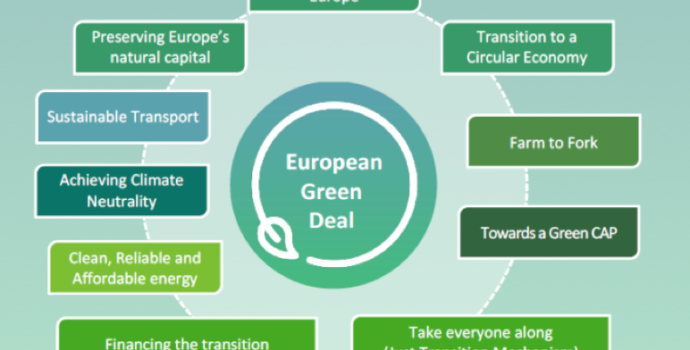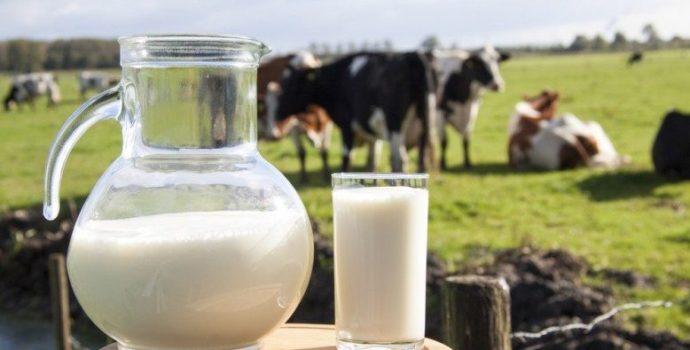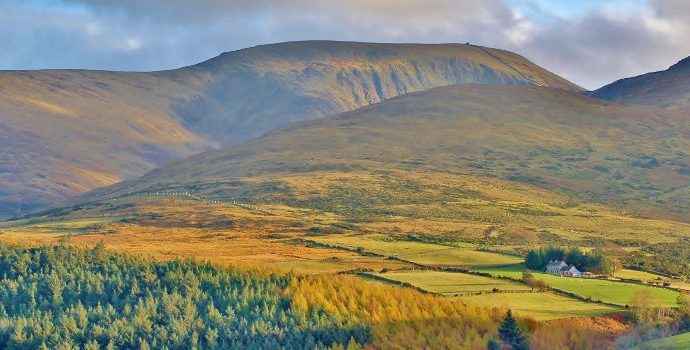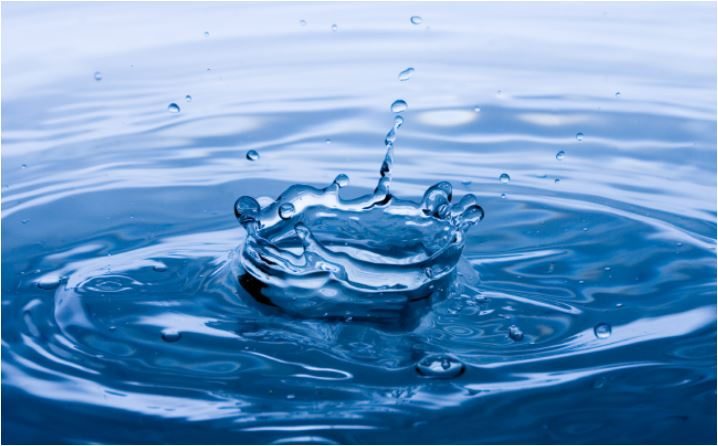
Water Quality in Ireland – 2018
The EPA published two water quality reports in recent weeks. The Urban Waste Water Treatment report assessed the management of waste water in Ireland in 2018. The graphic in figure 1 sets out the areas discharging raw sewage and the large urban locations that failed to meet the EU’s treatment standard. This has resulted in raw sewage from the equivalent of 77,000 people being released into our rivers and streams every day.
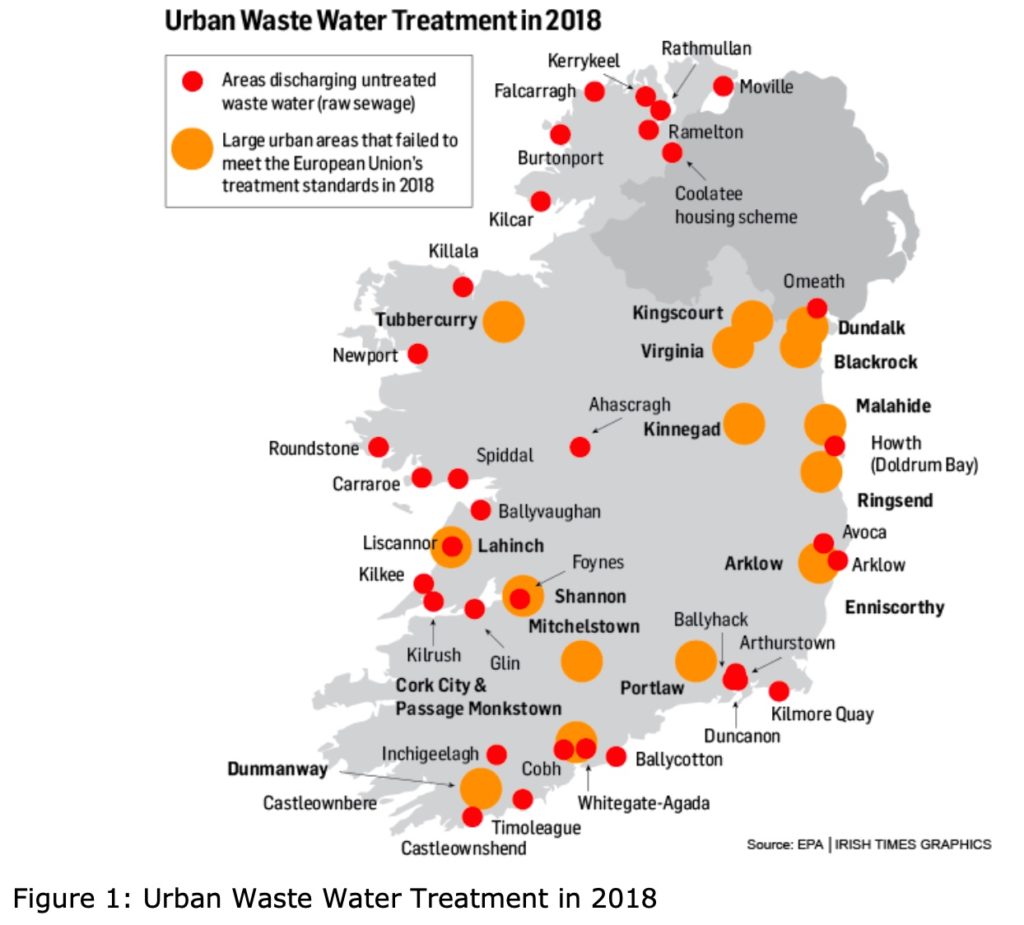
The key finding from the second report, Water Quality in Ireland 2013-2018 are as follows:
- 92% of groundwater bodies, 80% of coastal waters, 53% of rivers, 50% of lakes and 38% of estuaries were found to be of satisfactory quality.
- Since the last full assessment, river water quality has declined, with a net decline of 5.5% (128 water bodies) in the status of river water bodies.
- There is a loss of the pristine (‘best of the best’) river water bodies. There are now just 20 pristine river sites, a decline from over 500 sites in the late 1980s.
- The number of seriously polluted river water bodies (the ‘worst of the worst’) has started to rise – from 6 to 9 – after many years of an improving trend.
- The number of fish kills increased to 40 in 2018 after a historic low of 14 in 2017. It is likely that the hot summer and low flow conditions in 2018 had an impact on this.
- The EPA identified that the main significant pressures impacting on water quality in Ireland include agriculture, wastewater discharges and pressures from forestry activities.
IFA Action
IFA President Joe Healy made comments on national and local media, including Virgin Media News and Today FM saying that it’s high time that local authorities and Irish Water addressed the illegal pumping of raw sewage into our rivers and streams, and to ensure Ireland does not face fines following a ruling by the European Court of Justice (ECJ) earlier this year.
Regarding farming’s contribution to a better rural environment, Joe Healy said that over the past decade farmers have spent over €2.5bn bringing their farmyards up to the highest environmental standards. Also, over 40% of all farmers in Ireland take part in the Department of Agriculture’s Green Low Carbon Agri- Environment Scheme (GLAS), which is over-subscribed and closed to new entrants.
In addition, all farmers farm to Good Agricultural and Environmental Conditions. Farmers throughout the country are also actively taking part in the ASSAP programme operated by Teagasc and dairy co-ops.
He also called for the introduction of the following measures, which will lead to better water quality in rural areas:
- A national liming support scheme, to address soil fertility issues and ensure nutrients are taken up in soils.
- Increased supports for low-emissions slurry spreading equipment, to reduce the risk of nutrient run-off.
- The re-opening of the GLAS programme and an increase in annual payments to €10,000.
Joe Healy concluded his comments by highlighting that Ireland’s water quality is amongst the best in Europe, this is something to be proud of. However, images of raw sewage going into our rivers and streams take from this. He added that farmers will continue to take part in schemes such as GLAS, as well as voluntary schemes like the ASSAP programme. After all, farmers are the custodians of the rural environment.

